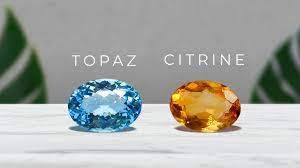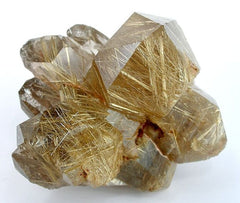July's birthstone is Ruby
Jul 04 2016 0 Comments Tags: birthstones, ruby
It won't surprise you to know that rubies are known as the "king of gemstones" in Sanskrit ('ratnaraj'). They are endlessly regal - indeed, it is the most prominently-featured stone in the British Crown Jewels.
So, if you are thinking of purchasing a ruby for the jewel in your crown, read on to find out everything you need to know about this gorgeous gemstone!

Ruby is most definitely a stone for a loved one: it is associated with desire, and some even attribute an aphrodisiac effect to the gem. Somewhat less romantically, they are also said to alleviate certain blood disorders, menstrual pain and circulatory problems.
Apart from being the birthstone of July, ruby is also associated with 15th and 40th wedding anniversaries, and those born into the Capricorn star sign.

Of course the jewellery queen herself, Elizabeth Taylor, had several sizeable rubies in her collection. The ring to the right is a Van Cleef & Arpels number which Richard Burton gave her for Christmas in 1968. In 2011, it fetched $4.2 million at Christie's.
Ruby is very closely-related to sapphire and shares several of its properties, including hardness. Its durability makes it particularly appropriate for setting in rings, since it will not succumb to everyday wear-and-tear. Next month we will be writing a special post on selecting gemstones for engagement rings, so keep an eye out for that!

Before you think about purchasing a ruby, have a look at our factfile:
Chemical: Corundum
Crystal System: Trigonal
Hardness: 9 on the Mohs scale
Refractive Index: 1.768–1.772
Cleavage: none
Transparency: Transparent to Opaque
Provenance: Myanmar is the world's main source of rubies. However, the military junta there have taken advantage of the trade of one of the world's most precious stones and an embargo was placed on Burmese rubies. Our rubies come from our home in Minas Gerais, Brazil. Read more about ethical gemstones and our commitments to source gemstones in a way which doesn't damage communities or their land.
The value of a ruby is defined in accordance with the so-called "Four 'C's":
- Clarity refers to the transparency of the ruby. It is very normal for rubies to display inclusions, though if they interfere with transparency or brilliance, the stone's value decreases.
- Colour defines a ruby's value above all else: the most sought-after is a strong red with a hint of blue. A ruby without a strong enough red pigment is, in fact, a pink sapphire!
- Carat refers to size, and of course, the bigger the stone is, the more expensive it will be!
- Cut: our current collection features cushion cuts and round cuts, but we are updating it all the time!
To care for your ruby, cleaning with a soft brush, tepid water and a mild soap will suffice - never use ultrasonic cleaners, acetone or steam cleaners.
0 comments





Leave a Comment